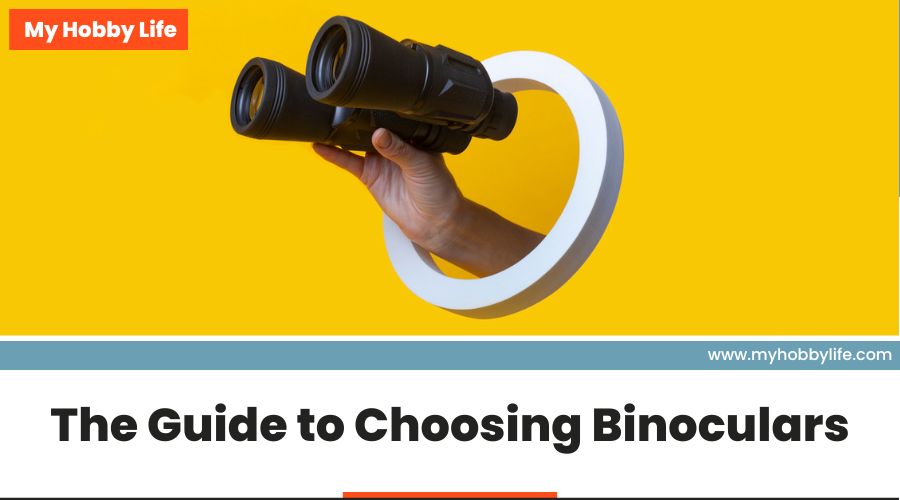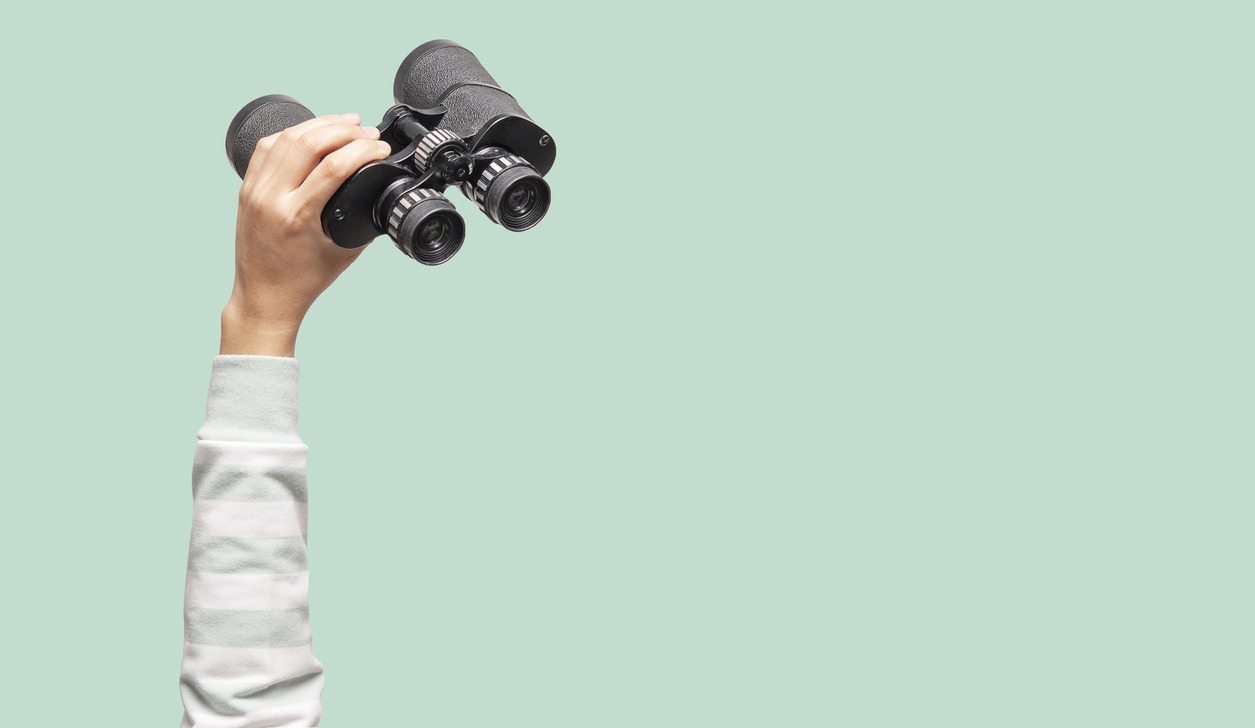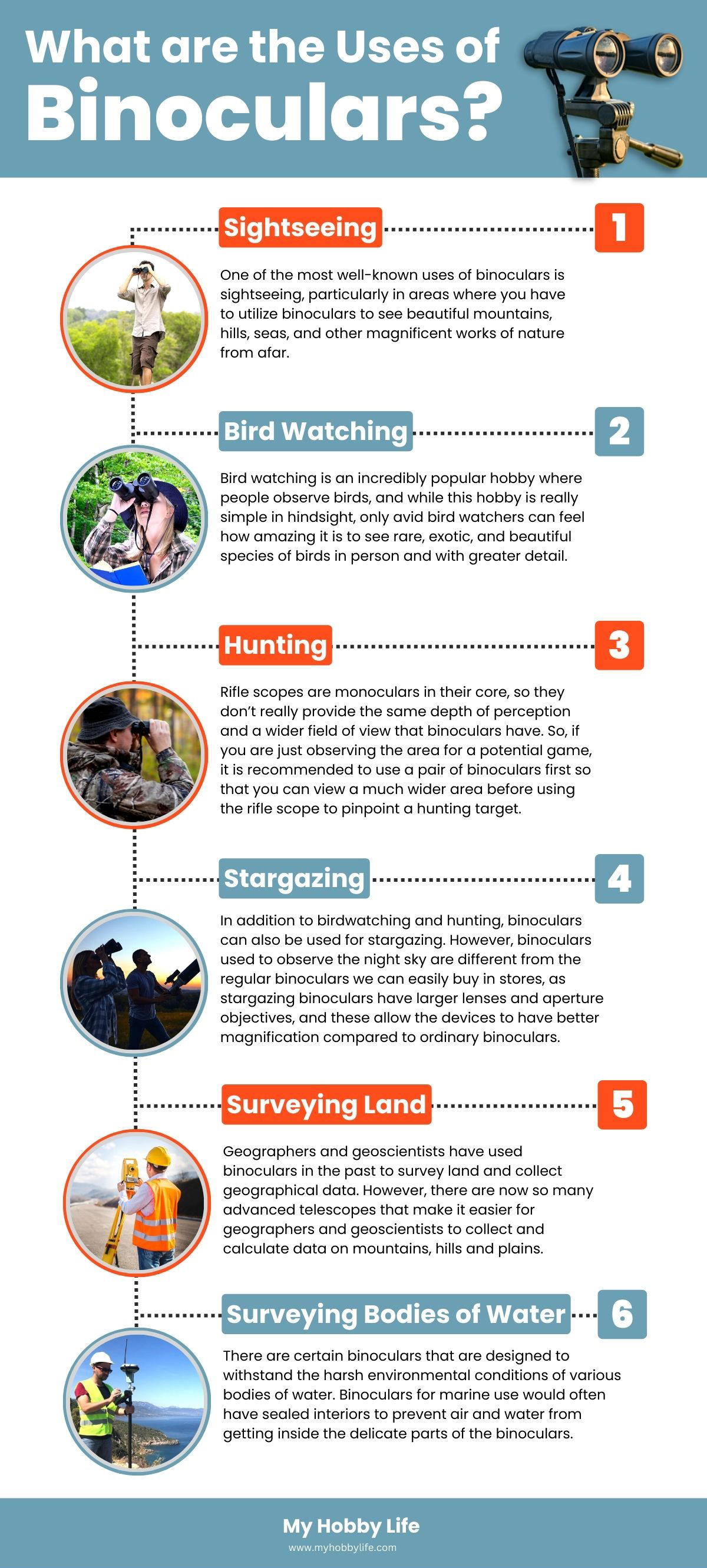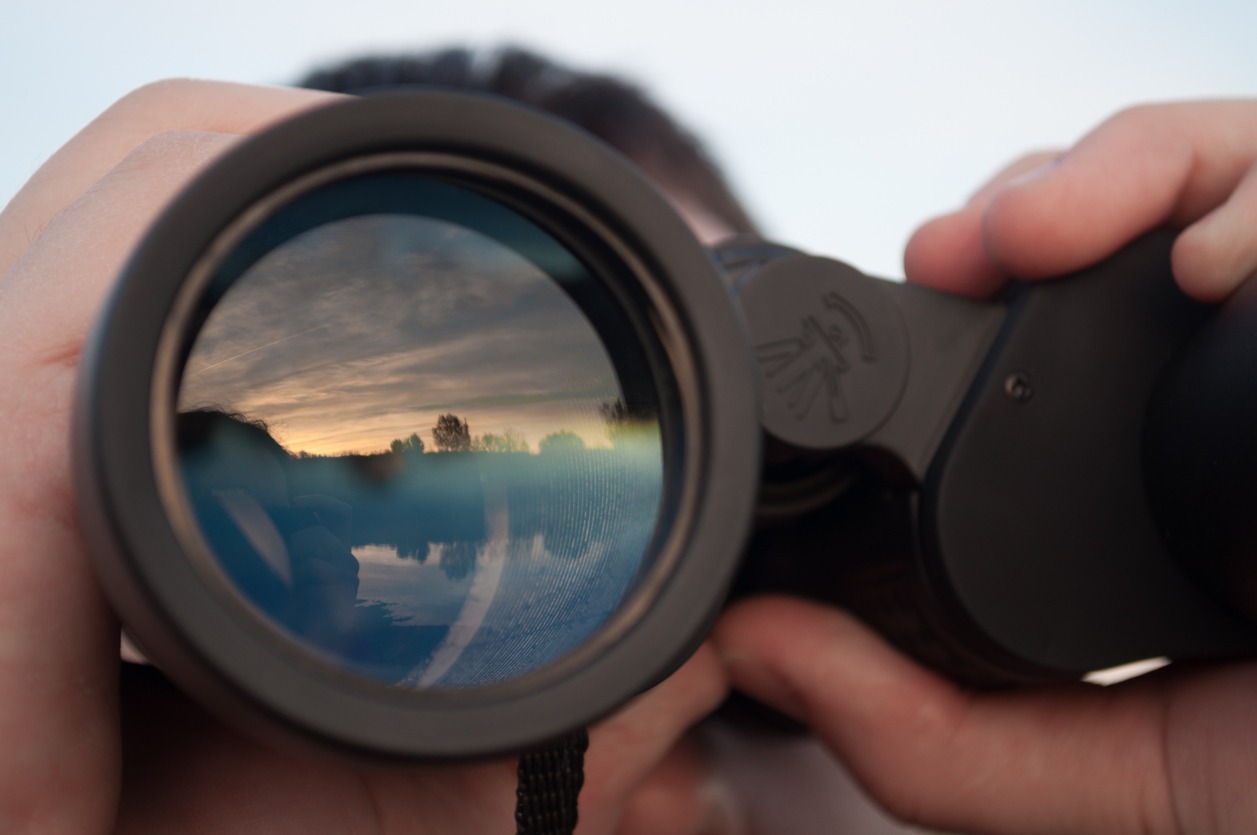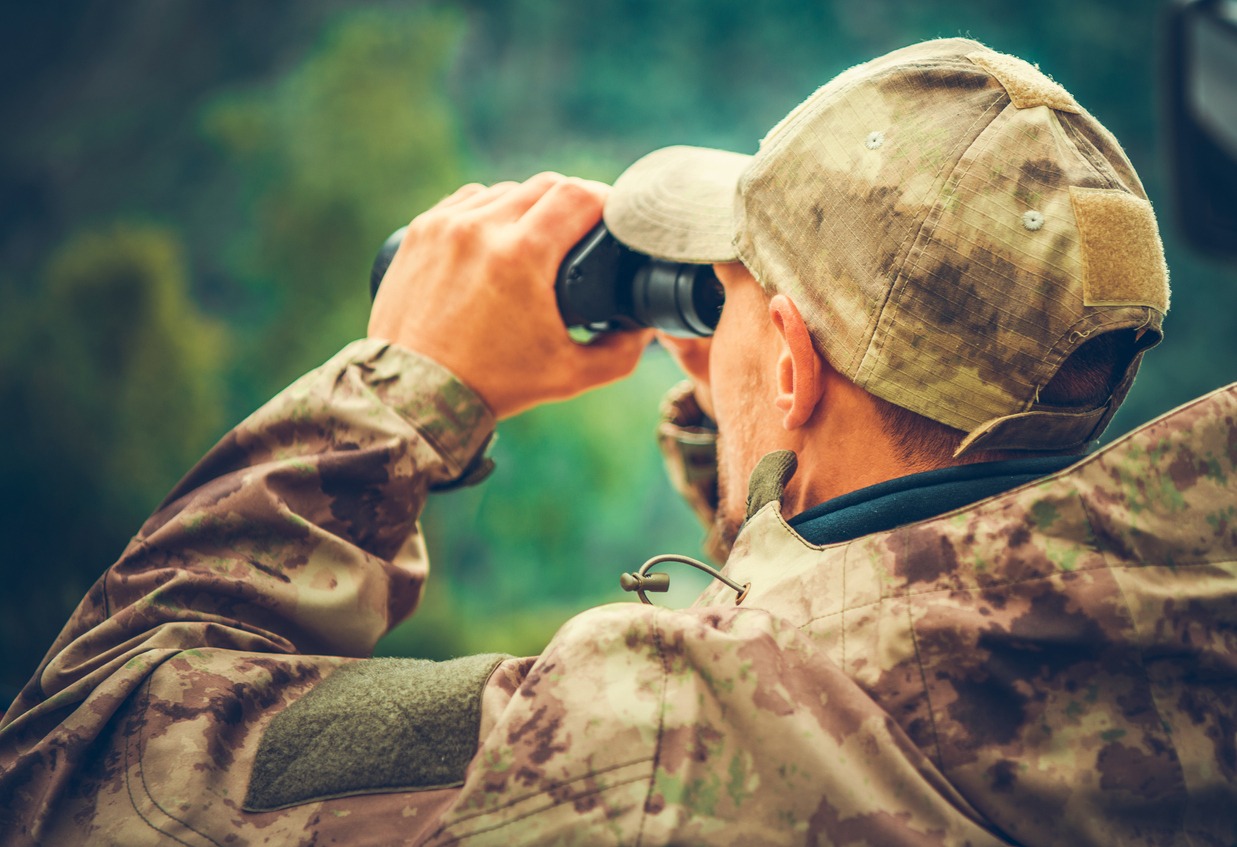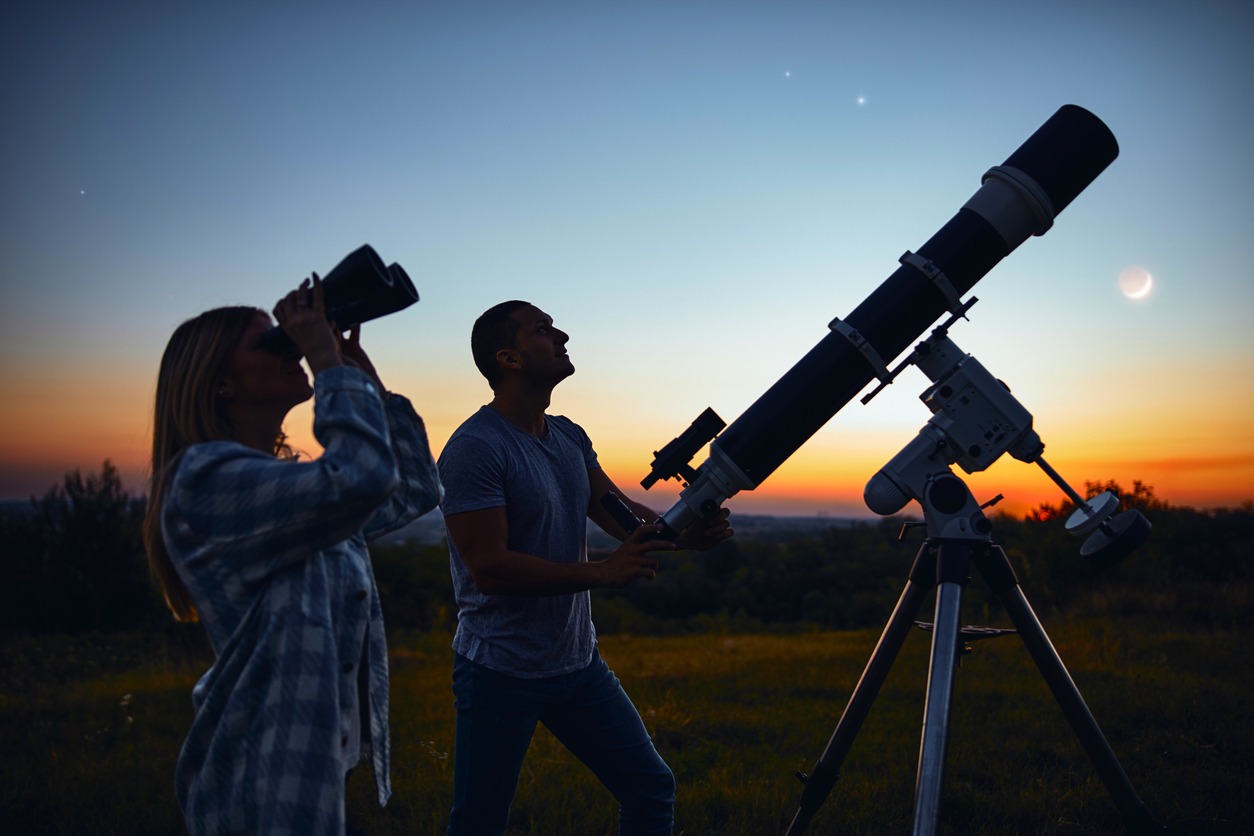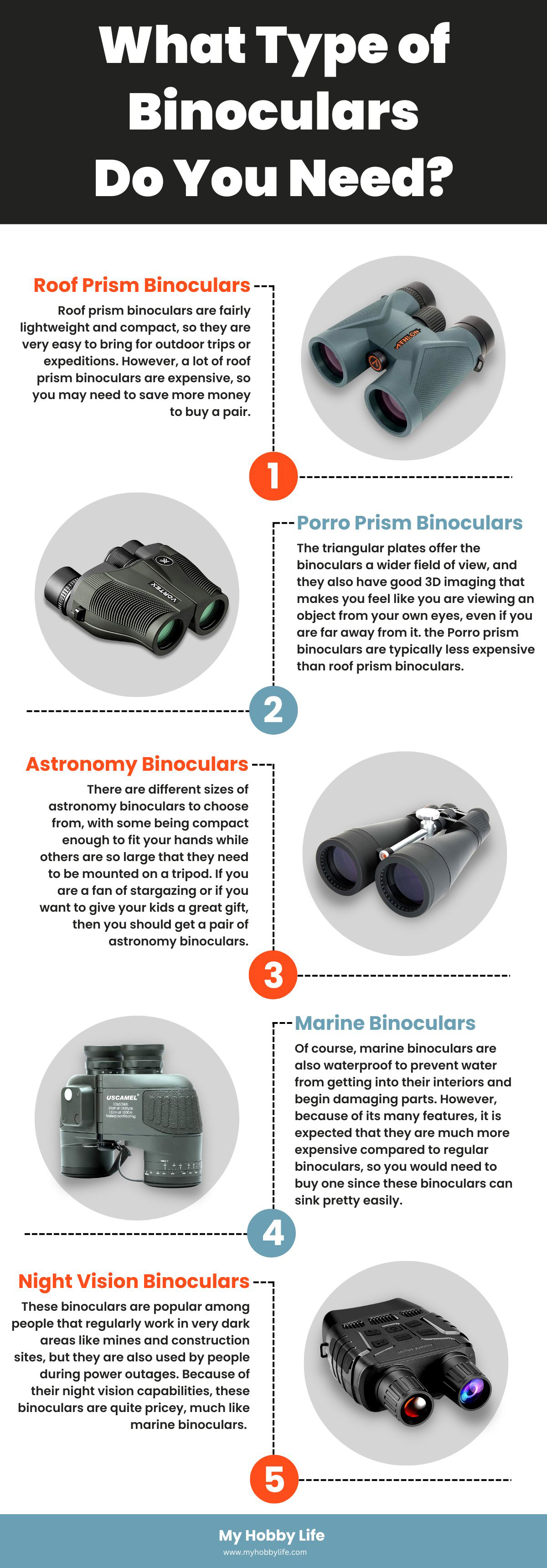For hunting, sightseeing, surveying, and bird watching, a piece of equipment that people should have with them is a great pair of binoculars. The binoculars are telescopes that are often portable and compact, which means that you can bring them anywhere with you without adding weight or occupying too much space on your backpack.
There are so many binoculars to choose from in online shops and physical hobby stores, and while the sheer number of products or models for binoculars is great for people that want to have a lot of options, it is not really advantageous for beginners who may have a hard time finding the most suitable pair of binoculars for them out of the thousands available. If you are one of those beginners, we are here to provide you with a simple guide about binoculars and what to look for when buying a pair. So, without any more delays, let’s get started with the guide to choosing binoculars.
What are Binoculars?
Binoculars are a set of two refracting telescopes that are designed to provide magnified sight for a human’s pair of eyes. The refracting telescopes are mounted or installed side-by-side and are pointing in the same direction so that they will provide the same view for the user.
The ability of the user to use both eyes when viewing objects from far away is called binocular vision. Through the binoculars, you will be able to view a three-dimensional image similar to how our eyes perceive whatever we see, as the two refracting telescopes each produce slightly different images that create an impression of depth. [1]
Most binoculars are often held using one or two hands, although there are also models that allow you to mount them on helmets or a head strap. Because most of us have different eye measurements, particularly the distances between both eyes, a lot of handheld binoculars would have an adjustable centerpiece that expands or shortens in width.
What are the Uses of Binoculars?
Binoculars are arguably one of the most useful types of telescopes or accessories today, as they have so many different uses for various industries, businesses, and hobbies. Here are some of the most popular uses of binoculars.
Sightseeing
One of the most well-known uses of binoculars is sightseeing, particularly in areas where you have to utilize binoculars to see beautiful mountains, hills, seas, and other magnificent works of nature from afar. There are even some tourist spots that offer coin-operated binoculars so that you don’t have to use handheld binoculars anymore to see distant objects and areas. Sightseeing can also includes seeing your favorite players up close at a sporting event or musical artist at a concert.
Bird Watching
Bird watching is an incredibly popular hobby where people observe birds, and while this hobby is really simple in hindsight, only avid bird watchers can feel how amazing it is to see rare, exotic, and beautiful species of birds in person and with greater detail. One of the basic tools used by birdwatchers to observe birds is a pair of binoculars, and the ones they use would typically have 8X to 10X magnification so that they will be able to see birds from far away without distracting or disturbing the animals. [2]
Hunting
While rifle scopes are effective peripherals to have for hunting rifles when looking for a potential game, it is sometimes not enough for you to have a much better view of your surroundings and far away areas where deer, ducks, and other types of game are located. Rifle scopes are monoculars in their core, so they don’t really provide the same depth of perception and a wider field of view that binoculars have. So, if you are just observing the area for a potential game, it is recommended to use a pair of binoculars first so that you can view a much wider area before using the rifle scope to pinpoint a hunting target.
Stargazing
In addition to birdwatching and hunting, binoculars can also be used for stargazing. However, binoculars used to observe the night sky are different from the regular binoculars we can easily buy in stores, as stargazing binoculars have larger lenses and aperture objectives, and these allow the devices to have better magnification compared to ordinary binoculars. Keep in mind that binoculars for stargazing can have large exteriors, so you may need to reserve more space on your backpack for these devices. Fortunately, many stargazing binoculars already come with a carrying bag.
Surveying Land
Geographers and geoscientists have used binoculars in the past to survey land and collect geographical data. However, there are now so many advanced telescopes that make it easier for geographers and geoscientists to collect and calculate data on mountains, hills, and plains, making simple binoculars obsolete for them. However, there are still some that use binoculars for simple calculations or in areas where they cannot bring a larger telescope.
Surveying Bodies of Water
There are certain binoculars that are designed to withstand the harsh environmental conditions of various bodies of water. Binoculars for marine use would often have sealed interiors to prevent air and water from getting inside the delicate parts of the binoculars. Moreover, these devices would also have a nitrogen-filled interior that prevents fogging, which can blur your vision when using binoculars. Because of how heavy marine binoculars are, users would usually attach a floating strap that acts like a lifeboat to prevent the binoculars from sinking.
What Type of Binoculars Do You Need?
With various uses, it is normal for binoculars to have different types that better suit particular utilization or purposes. If you are going to use binoculars for hunting, stargazing, or just sightseeing, you would need a pair that would be more suitable for the activities or tasks that you want to accomplish. Here are details about the different types of binoculars so that you will have an idea of what to get.
Roof Prism Binoculars
When it comes to binoculars, there are two main types that you should know about, and these are roof prism binoculars and Porro prism binoculars. The roof prism binoculars, which are considered the newer or more modern type compared to the Porro prism, have a fairly simplistic design at first glance, as the light that passes through the lenses of the binoculars travels straight into the eyepieces. However, before the light actually reaches the eyepieces of the binoculars, it actually passes through complex pathways in the middle first. These pathways would help amplify the light and produce brighter images and better magnification for the binoculars. [3]
Roof prism binoculars are fairly lightweight and compact, so they are very easy to bring for outdoor trips or expeditions. However, a lot of roof prism binoculars are expensive, so you may need to save more money to buy a pair. Another downside to roof prism binoculars is that they would sometimes have a narrower field of view, which is a big con for people that want to see wider areas on their binoculars. Take a look at three of the best roof prism binoculars below.
- Athlon Optics Midas Binoculars – first on the list is this pair of binoculars that has compact roof prisms to make it more lightweight and portable. In addition, this pair also has protective XPL exterior lens coatings so that the lens would last much longer compared to most binoculars in the market.
- Celestron Nature DX ED Premium Binoculars – next is the Celestron Nature DX ED, a pair of premium binoculars that is very versatile thanks to its high-quality ED objective lenses that allow users to see clearer images even in the maximum magnification settings. What’s great about this pair of binoculars is that it is weather-resistant and waterproof, so you can bring this with you anywhere, even in the harshest environments.
- Wingspan Optics FieldView Compact Binoculars – if you are looking for a very compact pair of binoculars, you should check out this product, as it is very lightweight and smaller compared to most roof prism binoculars. Despite their small size, the binoculars still provide clear images at less than 1000 yards of zoom.
Porro Prism Binoculars
The Porro prism binoculars are named after its inventor, an Italian man named Ignazio Porro, who developed the magnifying technology inside the binoculars in the 19th century. Instead of passing through complex pathways inside the binoculars, the light that enters the lenses of the binoculars would pass through triangular plates or light-catchers in a zigzag pattern before reaching the eyepieces. [3]
The triangular plates offer the binoculars a wider field of view, and they also have good 3D imaging that makes you feel like you are viewing an object from your own eyes, even if you are far away from it. Because of their simple design, the Porro prism binoculars are typically less expensive than roof prism binoculars, but the drawback to them is that they are quite heavy and they produce lower magnification. But, if you are looking for budget-friendly binoculars, you still can’t go wrong with the Porro prism binocular. Here are three that are considered some of the best in the market.
- Bushnell H20 Waterproof Porro Prism Binocular – one of the highest-rated Porro prism binoculars online is the Bushnell H20 Waterproof Porro Prism Binocular, which features BaK-4 prisms that deliver crisp images and improved transmission of light from the lenses to the eyepieces. This pair of binoculars are also waterproof and fog-free, so you can use it underwater.
- Vortex Optics Raptor – another great pair of Porro prism binoculars is the Vortex Optics Raptor, which has a subtle yet beautiful dark green exterior. This product comes in two sizes, 10×32 and 8.5 x 32, and each of these sizes offers different objective lenses that provide similar clarity and magnification.
- Vortex Optics Vanquish – the second pair of Porro prism binoculars from Vortex Optics is the Vanquish, which has a sleek and futuristic design compared to the simple exterior of the Raptor. This pair of binoculars has 10X magnification and 26mm objective lenses for optimal resolution, even at zoomed-in settings.
Astronomy Binoculars
Besides the two main types of binoculars, there are also subtypes that are designed for specific purposes, and one of these subtypes is the astronomy binoculars. These binoculars are significantly heavier and bulkier compared to Porro prism binoculars, but their weight and size are justifiable since they would need a larger lens in order for the user to see the night sky better.
There are different sizes of astronomy binoculars to choose from, with some being compact enough to fit your hands while others are so large that they need to be mounted on a tripod. [4] If you are a fan of stargazing or if you want to give your kids a great gift, then you should get a pair of astronomy binoculars. Here are three astronomy binoculars that we recommend.
- Celestron SkyMaster 20X80 Binoculars – this pair of astronomy binoculars is arguably one of the best in the market, as it features powerful 20X magnification that is sufficient for night sky viewing and stargazing. While the binoculars can be held by hand, it has a tripod adapter so that your view will be much steadier.
- Orion 15X70 Astronomy Binoculars – a great option for astronomy binoculars is the 15X70 binoculars made by Orion. This pair has 70mm lenses that are capable of high-power viewing that is needed for stargazing. The binoculars also have an 18mm eye relief that makes viewing more comfortable for users, especially those that wear corrective lenses.
- ESSLNB Astronomy Binoculars – if you want affordability, you can get the ESSLNB Astronomy Binoculars, which are less expensive than the Celestron and the Orion binoculars. The ESSLNB binoculars have 13 to 39X magnification that allows you to see details of the moon even from afar. If you want to capture the view from the binoculars, the ESSLNB model includes a smartphone adapter so that you can attach the smartphone directly to an eyepiece.
Marine Binoculars
Another subtype of binoculars you should know about is the marine binoculars, which are made to be used underwater. Marine binoculars would commonly have a wider field of view compared to regular binoculars, and they also have a tougher exterior so that they can withstand the harsh conditions of different bodies of water like oceans or lakes.
Of course, marine binoculars are also waterproof to prevent water from getting into their interiors and begin damaging parts. However, because of its many features, it is expected that they are much more expensive compared to regular binoculars. A con that you should also remember is that some marine binoculars don’t come with a floating strap, so you would need to buy one since these binoculars can sink pretty easily.
- Steiner 7X50 Navigator Pro Binoculars – a pricey pair of marine binoculars is the Steiner 7X50 Navigator Pro, which is arguably one of the best binoculars for marine or underwater use. This model has a 14-psi pressurized dry nitrogen inside to prevent fogging, while its exterior is rugged and durable, making it a very tough pair of binoculars that can last for years.
- USCAMEL 10X50 Marine Binoculars – if you don’t have the budget to buy the Steiner binoculars, an affordable option is the USCAMEL 10X50 Marine Binoculars. This particular pair of binoculars features a large 50 mm objective lens that is capable of 10X magnification. Much like all marine binoculars, the USCAMEL binoculars are also waterproof and durable.
- Hooway 7X50 Waterproof Marine Binoculars – another affordable option is the Hooway Marine Binoculars, which have a 50mm objective lens and 7X magnification capabilities. Besides being waterproof, this pair of marine binoculars also has an illuminated compass so that you can locate which direction you are headed.
Night Vision Binoculars
Night vision binoculars are a subtype that is specifically used to provide the user the ability to see through the dark. Most night vision binoculars rely on ambient lighting to produce night vision, although there are digital versions that produce light using infrared and other sources.
These binoculars are popular among people that regularly work in very dark areas like mines and construction sites, but they are also used by people during power outages. Because of their night vision capabilities, these binoculars are quite pricey, much like marine binoculars. But, unlike marine binoculars, night vision binoculars can be very fragile depending on their construction and materials used for their exterior. Nonetheless, a pair of night vision binoculars is still one of the best devices to have when you want to see better in the dark. Below are three great night vision binoculars we recommend you check out.
- GTHUNDER Digital Night Vision Binoculars – this is a very popular pair of night vision binoculars, and one of the reasons why it is popular is because it has an infrared illuminator that allows you to have night vision even without a source of ambient light. Furthermore, it also includes a 32GB memory card so that you can record and save videos and photos.
- Hawkray Night Vision Binoculars – what’s great about this particular pair of night vision binoculars is that it has a wide digital screen instead of eyepieces, which means that you will be able to view objects in better detail and with less eye strain. Also, if you have saved videos and photos on this digital pair of binoculars, you will be able to view them on the LCD screen too.
- ZIMOCE Night Vision Binoculars – for those looking for a compact pair of night vision binoculars, they should see the ZIMOCE Night Vision Binoculars, which are so small that they can fit in most pockets. Besides being compact, the pair of ZIMOCE binoculars is also very easy to use because of its intuitive buttons found at the top.
Conclusion
Choosing the right binoculars is relatively easy as long as you know what type of binoculars you need and what features you would likely use in different situations. We hope that this article has helped you in deciding what kind of binoculars you want, and if you don’t have the time to research, you can just check out our recommendations.
References
[1] ConductSience (2020, January 1). Binoculars: A Complete Guide. Conduct Science. Retrieved October 6, 2022, from https://conductscience.com/binoculars-a-complete-guide/
[2] DesMarais, M. Binoculars Uses: Common & Uncommon Use Cases. Hiking and Fishing. Retrieved October 6, 2022, from https://hikingandfishing.com/binocular-uses/
[3] Kershner, K. Binoculars Buying Guide – What Are You Having: Roof Prism or Porro Prism Binoculars? HowStuffWorks. Retrieved October 6, 2022, from https://electronics.howstuffworks.com/gadgets/high-tech-gadgets/binoculars-buying-guide1.htm
[4] Sparks, R. (2022, July 24). 6 Different Types of Binoculars & Their Uses (with Pictures). OpticsMag. Retrieved October 6, 2022, from https://opticsmag.com/different-types-of-binoculars/
